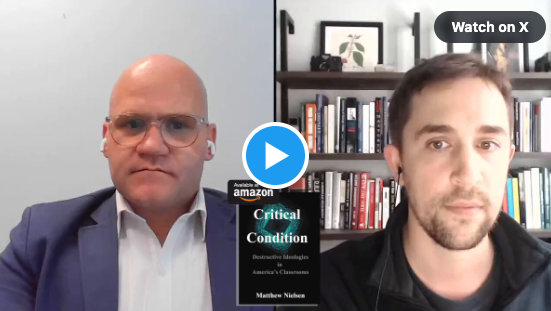by Dr. Ian Kingsbury
The media tends to distill debates over charter schools as one of advocates versus opponents. Reality is more complex. Those of us who share the principle that charter schools are or can be a net positive are ostensibly united in the belief that children benefit from having some publicly funded recourse to the traditional public education system. Beyond that, things get complicated. Precisely what the purpose of charter schools ought to be and how charters should be authorized and overseen to fulfill that mission are questions that expose deep fissures within the “pro-charter” crowd.
In their 2017 report Charting a New Course, co-editors Jeanne Allen, Cara Candal, and Max Eden simplify competing viewpoints as one of system-centered reform versus parent-centered reform. “System-centered reformers want to arrive at higher quality educational options by expertise-driven management…using standardized test-scores to make data-driven decisions.” Meanwhile, parent-centered reformers “want to see a more open and dynamic system, where educational entrepreneurs are freer to open new schools and parents decide which schools should close and which should expand based on whether they want to send their children there.”
On the spectrum of charter management strategies, Aaron Churchill appears to fall closer to the system-centric approach in a recent Fordham report, Reinventing Ohio’s Charter School Sector: 2015-2023. Churchill chronicles the ways in which Ohio overhauled their charter sector in 2015- including sanctions for authorizers with “low-performing” portfolios and requiring authorizers to enter a contract with the Ohio Department of Education- and observes that these reforms coincided with a substantial increase in test score performance within the Ohio charter sector. Churchill endorses these changes and concludes with recommendations for further improvements, including increasing the weight of academic components in evaluation scores from one third to one half.
Cards on the table: I am a parent-centric reformer. Fundamentally, my aversion toward test-based, top-down management of the charter sector is animated by beliefs that parents are best-situated to make schooling decisions for their child and that market demand provides a better signal of school quality than do test scores. On these first principles reasonable people can disagree.
While the priorities of the system-centric approach are reasonable, the track record on how well system-centered approaches achieve desired goals ought to feed skepticism. Indeed, the weight of evidence nationally is bleak. In an Educational Freedom Institute report, professors Ben Scafidi and Eric Wearne observe that system-centric policies are poorly predictive of math and reading gains. For example, while Nevada has largely embraced the system-centric paradigm, analysis from the Center for Research on Education Outcomes (CREDO) finds that, at last check (mid 2010s), Nevada charters had the lowest value-added math and reading gains of all 30 charter sectors featured in their analysis.
Scafidi and Wearne also observe that the cautious system-centric approach toward charter expansion (e.g. expanding networks with a track record of high test scores) tends to amount to weaker market penetration. Washington State for example embraces the system-centric logic for chartering, but the state features only 18 charter schools 11 years after they became permissible through ballot initiative. In other words, cautious tinkering based on test scores means that fewer students can enroll in a charter school. That’s bad news for students who miss out on having choices, and it’s also bad news for public school students who don’t enroll in charters. Competitive spillovers from school choice (i.e. public schools perform better in response to competitive pressure) have been detected in most studies that examine the issue. It’s likely no coincidence, as Matthew Ladner argues, that Arizona- with its Wild West embrace of educational freedom- paces the nation in student growth. It’s a tricky and imprecise business predicting which schools will have high test scores. It’s decidedly less difficult to predict that markets will function according to the principles that have defined them for millennia.
The benefits we imagine accruing from the system-centric approach toward chartering prove elusive, but the drawbacks are quite clear. States that manage from the top-down through test scores tend to erect disproportionate entry barriers for Black and Hispanic entrepreneurs that aspire to open charter schools. States that employ automatic closure laws (i.e. charters are automatically closed if they don’t reach certain performance benchmarks) disproportionately shutter schools that predominantly serve students of color. Churchill points out that only one charter in Ohio was closed through automatic closure, but the de facto toll is almost certainly higher, as authorizers or charter boards tend to force the issue before formal application of the law becomes necessary. Plus, while policy can be a blunt instrument, it can also be a powerful signaling device. Automatic closure sends a clear message to authorizers: Close schools with low test performance. More often than not, such schools will serve students who are urban, low-income, Black, Brown, or struggling along personal or psychosocial dimensions.
Top-down management through test scores also invariably suppresses innovation, as authorizers and school leaders become conditioned to prioritize test scores over considerations about the extent to which their offering is truly unique from what is offered through traditional public schools. Concerns around isomorphic pressures are amplified by the advent of universal education savings accounts (ESAs), which invite entrepreneurs to innovate in a highly flexible, relatively permissionless system. Universal ESAs are available in six states and appear rapidly on the way toward becoming a fixture of red state education policy. Attempts to manage charter markets through test-based regulatory practices would all but ensure that the most innovative entrepreneurs flock to the private school market in these states.
Finally, conservatives are extremely concerned that the values transmitted by public schools misalign with their own values. A 2022 YouGov survey for example found “students being indoctrinated with liberal ideas” registered as the largest educational concern among Republicans. Like it or not, these concerns galvanized the unprecedented expansion of educational freedom in red states. A charter movement that conceives of its mission as one narrowly focused on test scores runs the risk of misaligning itself with what parents care about, potentially jeopardizing political support.
The track record for the system-centric approach toward charter management leaves much to be desired, but the system could sustain itself on facially reasonable logic. Still, much has changed in the past two or three years and charter advocates of all stripes find ourselves operating in a very different world than the one that birthed and sustained the charter movement. Indeed, political and programmatic headwinds might just render the system-centric approach untenable.


